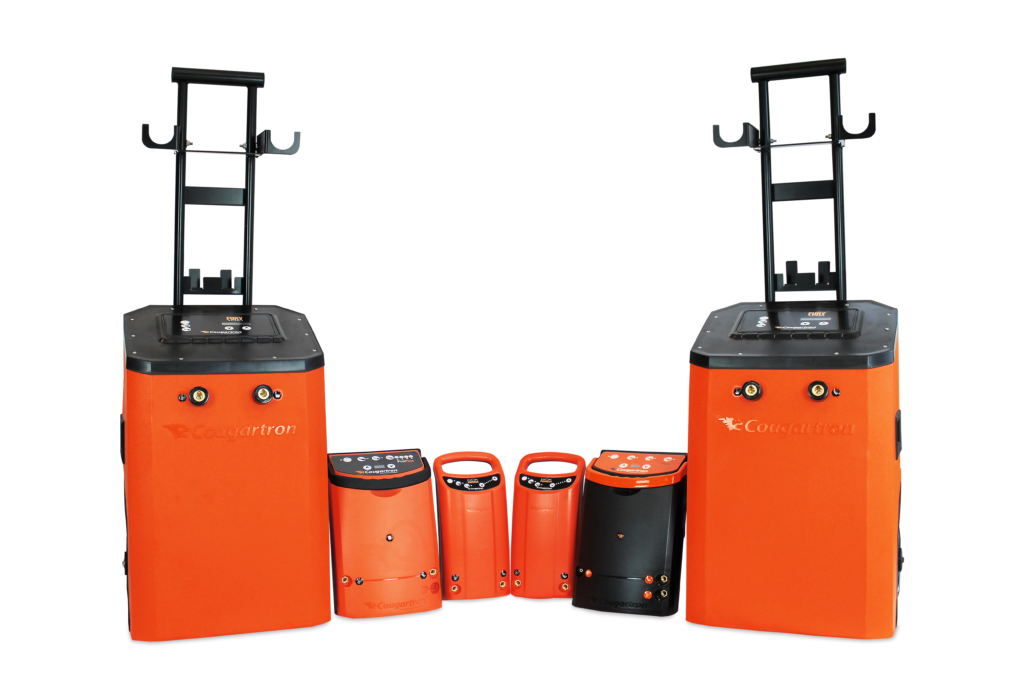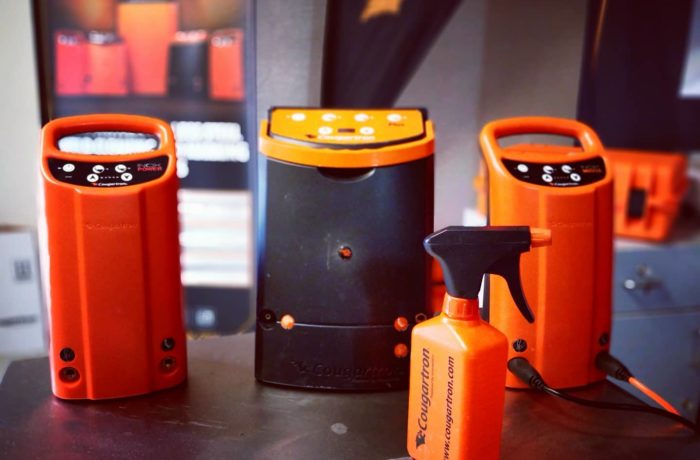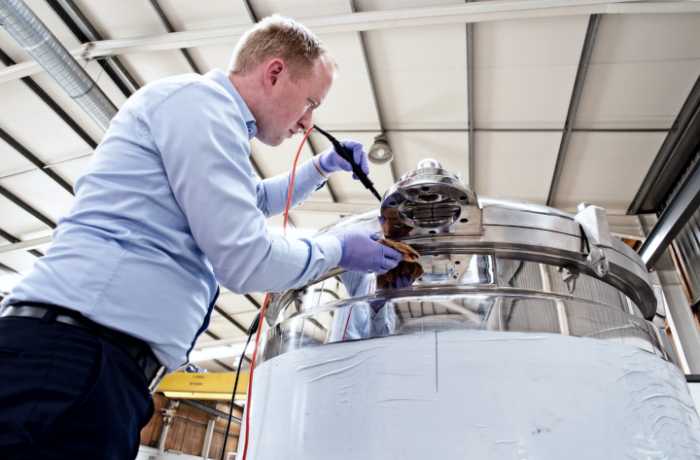Why Does Stainless Steel Rust After Welding and What You Can Do to Prevent Your Welds from Corroding
Stainless steel | Monday, 10 April 2017
Stainless Steel is Highly Resistant to Corrosion but can Still Rust
Last updated: 23.07.2019
The general perception of stainless steel is that it is a super alloy that never rusts. Well, this assumption is anything but true. The reality is that stainless steel does rust.
The word “stainless” does not imply free from stain or “stain-impossible”. It simply means that the alloy stains less.
This is exactly the case with stainless steel. When compared to other metals and alloys, stainless steel is the most resistant to corrosion.
Ordinary carbon or alloy steels are not in the same league as stainless steel when it comes to corrosion resistance.
So why does stainless steel rust at all?
Aggressive Conditions Cause Rust on Stainless Steel
Although stainless steel does corrode, it is important to note that the alloy will not rust under normal atmospheric or water-based environments.
In other words, the corrosion of stainless steel takes place in specific aggressive conditions which are conducive to corrosion.
Basic types of stainless steel like 304 and 316 may corrode easier in certain environments and then a more highly alloyed stainless steel can be used.

Therefore, the use of basic forms of stainless steel is not recommended in more hostile conditions.
To make sure that the stainless steel application or structure remains unharmed, unscathed, and intact in more disadvantageous conditions, the use of highly alloyed stainless steel is required.
Corrosion Resistance is Quantitative
In other words, stainless steels are more or less corrosion resistant and they work very well in almost every environment.
The characteristic of corrosion resistance is both qualitative as well as quantitative.
Each type of stainless steel has a certain degree of corrosion resistance. Once the limit of resistance is crossed, the formation of rust is bound to occur.
The limit of the stainless steel corrosion resistance is determined by what goes into making the stainless steel in the first place. This means that the limit of resistance is dependent on the constituent elements.
As a result of this, different grades of stainless steel respond differently when left in an environment that aids corrosion.
The grade of the stainless steel is not the only way to judge its corrosion resistance.
The detailing and workmanship of each and every stainless steel goes a long way in deciding how vulnerable the steel will be to staining and corrosion.
6 Common Types and Forms of Stainless Steel Corrosion
Understanding the corrosion mechanisms of stainless steel helps us understand why stainless steel rust. Corrosion mechanisms in stainless steel can be broadly divided into 6 categories. They are:
- Pitting Corrosion: This is a localized version of corrosion that takes place in stainless steel when it is exposed to environments that contain chlorides.
- Crevice Corrosion: This is another form of localized corrosion that is triggered when the oxygen levels are extremely low in a crevice. This particular type of corrosion is not much of a problem unless the stainless steel is in a stagnant solution where chlorides can accumulate.
- Bimetallic corrosion: When dissimilar metals in a common electrolyte come into contact with another, then bimetallic corrosion, also known as galvanic corrosion can take place. The most common scenario is stainless steel corroding in rain.
- Stress Corrosion Cracking: Tensile stresses coupled with specific environmental conditions lead to stress corrosion cracking.
- General Corrosion: When the stainless steel has a pH value of less than 1, then general corrosion takes place.
- Intergranular Attack: When you heat austenitic stainless steel at around 450 to 850 degrees Celsius, the carbon in the steel converts to grain boundaries which leads to corrosion.
Removal and Prevention of Rust on Stainless Steel Welds
Welding is one of the most common types of metal fabrication.
Although useful, this process can seriously damage the anti-corrosive properties of stainless steel surfaces.
Melting, as a result of high temperatures during welding, deprives the steel of its protective layer and, therefore, its innate ability to resist corrosion.
For this reason, it is important to pay equal attention to two related but slightly different processes:
- Removal of rust, cross-contamination, and heat tints – If rust has already appeared on your weld, it is necessary to remove it completely, but it is also important to get rid of all contaminating particles that occur as a result of industrial metal processing. In addition, you will need to remove the heat tints that appear around the weld bead and within the heat-affected zone.
- Repassivation of the surface – Under normal conditions, the protective passive layer will self-restore if mildly damaged. However, this is usually not the case when discussing the side-effects of welding and other forms of metal fabrication. Therefore, your intervention is essential in preventing future corrosion.
But what exactly can you do in order to effectively clean your welds and achieve surface (re) passivation?
Luckily, you can now do both things simultaneously by utilizing the electrochemical weld cleaning method.
What makes electrochemical weld cleaning different?
Traditional weld cleaning methods such as chemical pickling and abrasive grinding are both associated with a number of safety and performance issues.
Due to the use of toxic acids, chemical weld cleaning is considered a hazard to both the environment and the human body. Strict legal regulations governing the use and disposal of dangerous pickling acids are a strong contributing factor to the complexity of the entire process.
Furthermore, this method is not suitable for cleaning stainless steel surfaces that are intended to be in contact with food, water, and other ‘sensitive’ materials where contamination of any kind is simply unacceptable.
As a manual method, grinding is often overly laborious and can cause significant noise and air pollution. However, the biggest concern is the lack of surface re-passivation.
Sure, you can use abrasive discs to successfully remove rust and other contaminants from the surface. However, when it comes to stainless steel, restoring its protective passive layer is of equal or even greater importance. With grinding and other mechanical techniques, re-passivation is not guaranteed since the surface can become ripped and other materials embedded in the surface from the grinding, which leaves the surface vulnerable and susceptible to future corrosion.
So, how does electrochemical weld cleaning help?
First of all, this method is incomparably safer than both chemical pickling and grinding.
By utilizing a weak electrical current and mild electrolytic fluids, you will be able to effectively remove all contaminants that occur as a result of welding. This includes rust, heat tints, discoloration, burn marks, and other forms of contamination.
Electrochemical cleaning will not only remove impurities from your welds but will also re-passivate the surface, which means that it will remain highly resistant to corrosion.
All this without hefty hand tools and dangerous chemicals.
Cougartron weld cleaners - The right choice for fast and safe TIG & MIG weld cleaning
Cougartron weld cleaners are an effective weapon against rust and all other forms of contamination appearing on stainless steel welds and surfaces after fabrication.
Our product range includes machines for everyday heavy-duty work and occasional light weld cleaning, so you will definitely find the right solution for your application. You don’t need special training to operate our equipment, it will provide extraordinary results in the hands of both hobbyists and industrial professionals.
In addition to cleaning, Cougartron machines will at the same time perform a full repassivation of the surface so you don’t have to worry about future corrosion.As noted above, this is achieved in a very fast and safe way.

Contact us for a free consultation
If you need help choosing the right equipment for your production, leave your details below and one of our experts will contact you as soon as possible.
Loading...
Please wait while the form loads.


 English
English  English (US)
English (US)  German
German  Danish
Danish  Swedish
Swedish  French
French  Polish
Polish  Spanish
Spanish 


